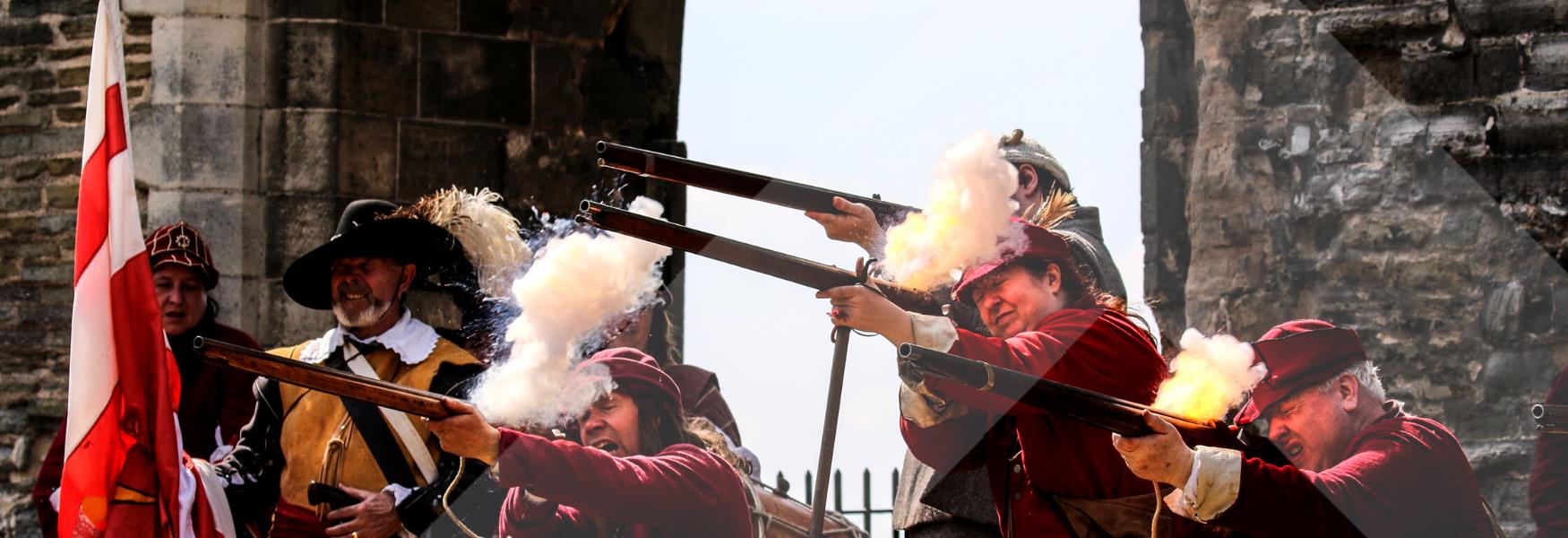To provide you with the best experience, cookies are used on this site. Find out more here.

To provide you with the best experience, cookies are used on this site. Find out more here.

To build your own Itinerary, click  to add an item to your Itinerary basket.
to add an item to your Itinerary basket.
Already saved an Itinerary?



You are here > Ideas & Inspiration > English Civil War
It was in Nottingham on 22 August 1642, that Charles I raised his royal standard as a signal for his supporters to rally to his side. Taking place on Derry Mount (later named Standard Hill) just outside Nottingham Castle, the event effectively marked the beginning of the Civil War. A plaque on Standard Hill commemorates this historic event, which you can visit today. 
Nottingham proved to be a town of divided loyalties and Charles soon moved off to Shrewsbury to gather more support for his cause. This left the Parliamentarians (Roundheads) free to garrison the castle with their own soldiers under the command of Colonel John Hutchinson. Nottingham wasn't the only place in the county with divided loyalties - Holme Pierrepont Hall experienced divides within its own walls. Two brothers living in the hall had opposing views with Henry, Marquess of Dorchester supporting the King and his brother, William being a close friend and supporter of Oliver Cromwell. Being on opposing sides and with their mother living at Holme Pierrepont Hall the house was actually never attacked during the Civil War, even though battles took place very close by. After the Civil War William was able to negotiate favourably with his brother over the return of his estates.
The Parliamentarians were soon in the thick of action in Nottinghamshire as Royalists from around the county repeatedly tried to retake Nottingham Castle for the king. On one occasion, in September 1643, 600 Royalist soldiers from Newark managed to fight their way through the town and up to the castle but were eventually driven away. In fact Hutchinson held the castle until the end of the war.
Like Nottingham, Newark held a strategic position on the route northwards through England. Due to its location at the junction of the Fosse Way and the Great North Road, the town was an important control point for access across the country. Troops loyal to the King swelled its population many times over, and from the safety of its defences, they would launch attacks on local Parliamentarians.
Newark came under siege no less than three times from the Parliamentarians, in 1643, 1644 and 1645-46. Conditions in the town grew intolerable, especially after an outbreak of plague, and in May 1646 Charles I ordered the town to surrender. Charles himself, disguised as a clergyman, made his way to Southwell where, at the King’s Arms, he gave himself up to the Scots Army. Charles was taken back to the Scots camp at Kelham, near Newark. The Civil War was effectively over.
Despite the surrender of Charles I, the Civil War rumbled on. A final skirmish in Nottinghamshire took place at Willoughby-on-Wolds in the south of Nottinghamshire on 5 July 1648. Here, in a field near the church, the Parliamentarians took on 800 Royalist troops under Sir Phillip Monckton. It was a ‘bloody’ battle but the Royalists were eventually overcome.
The Civil War in Nottinghamshire was finally over.
The remains of Newark Castle, with its resounding echoes of the past and its fine vista over the River Trent, attract visitors from all over Europe. Today, you can still see a cannonball hole on Newark Church from where a Parliamentarian cannonball is said to have hit it in 1644 and the Governor's House, the residence of the Governors of Newark during the sieges of the Civil War. You can also visit The National Civil War Centre in Newark, an excellent museum dedicated to this tulmutuous era of British history.
The Sconce and Devon Park, also in Newark, is home to the Queen’s Sconce - a 17th Century Civil War earthwork fortification. The Scheduled Ancient Monument is one of the country's finest remaining earthworks from the English Civil War. It is distinctively star-shaped when viewed from the air and is one of nine siege works remaining in a recognisable state in and around Newark. It’s considered an internationally important heritage feature, and is surrounded by open space and playing fields.
To read more about Nottinghamshire's pivotal role in the Civil War, read our blog about the battles, skirmishes and more.
A Civil War trail through Southwell, Newark and Nottingham is available to download here. For more History & Heritage trails, click here.
© Visit Nottinghamshire 2025. All Rights Reserved






